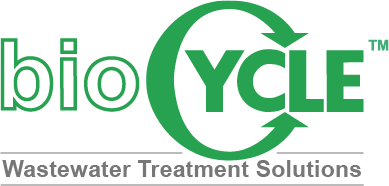Letter to Minister Re: Danger to drinking water caused by septic tanks
25th June 2010
Dear Minister,
You may recall that we wrote to you in January 2007 and Jan 2008 to draw attention to the dire situation in relation to the ongoing environmental pollution and danger to drinking water caused by domestic sewage from septic tanks and other effluent treatment systems, and the ongoing failure of the Department of Environment, Heritage and Local Government to take effective action to deal with the problem.
May I now take the liberty of giving you an update.
Following extensive representations from many quarters, including your good self, an investigation was undertaken by the Oireachtas Joint Committee on the Environment. The Committee heard presentations from the Irish Rural Dwellers Association, the Minister, the Department, the EPA, the Irish Agrément Board, the NSAI, the Domestic Effluent Trade Association, the Irish Onsite Wastewater Association etc.
In its report, dated May 2009, the Committee stated that its members “were genuinely surprised at the absence of regulation in this area and how strongly this impacted on rural communities and industry players”.
The Joint Committee called on the Minister to provide for –
1. Effective standards.
2. Joined up regulation.
3. Guarantees as to performance and durability of systems, and provision of credible certification – including site inspection.
4. Effective policing.
I am not aware of any substantive response by the Department to the Joint Committee.
In a separate arena the European Commission instituted proceedings against Ireland in the European Court of Justice, which found that Ireland has failed to fulfil its obligations under The Waste Directive 75/442/EEC. In light of its finding the Court can impose a financial penalty either by way of a lump sum or a daily fine for each day of non-compliance. Ireland has been in continued non-compliance since 1977.
So – has anything been done?
In 2000 the EPA published a set of draft “guidelines” for assessing site suitability and for installation and use of septic tanks and other domestic wastewater treatment systems, and instructed local authorities to enforce it in all cases.
This EPA manual was so inappropriate that it was redrafted in 2004 and 2007 and repackaged in 2009 as a “Code of Practice”. It contains so many anomalies and internal contradictions that its use will only make a bad situation worse. While insisting that its “guidelines” be followed, even in situations where it would be totally inappropriate or illogical to do so, it disclaims all responsibility for the results. At the same time it puts responsibility and liability for any resulting ill-effects on the consumer. This also has the effect of allowing others in the supply chain, designers, manufacturers, installers, etc, to walk away from defective or non-performing systems.
When pressed, the Department maintained that –
1. The Department is under no obligation to explain the regulations which it imposes
2. The EPA is an independent body over which has it no control
3. Interpretation and application of the EPA “guidelines” is a matter for decision by local
authorities, or for the courts.
Despite the above the Department, over the Christmas period 2009, circulated a Ministerial Letter to all local authorities instructing that the EPA “guidelines” must be applied in all planning applications, despite the fact that it is merely a draft document with no statutory standing.
Perhaps it may be noted that this is an example of the buck-passing and evasion of responsibility in our public bodies which has brought our country to the brink of bankruptcy.
It is also feared that this inappropriate and misleading Code of Practice may be submitted to the EU Commission and the European Court of Justice as evidence in mitigation of any proposed punitive decision.
So – What can be done?
For new systems there is a straightforward solution. i.e.
1. Change the Building Regulations (Part H) to require that all septic tanks and treatment systems comply with the EU standards which Ireland signed up to, but ignored in practice.
2. Require everyone in the supply chain to comply with the laws concerning Consumer Protection, Environmental Liability, General Product Safety, etc, rather than loading all responsibility and liability on the end-user.
3. Set a level of treatment to be achieved, and a specific quality of final effluent to be attained, before discharge to the environment.
4. Require all systems marketed to be tested as required by the Irish and EU standard, and the
certified results to be published in the format specified for CE marking.
5. Require that completed installations be certified “fit for purpose” by a competent person.
The above can be carried out at no cost to public finances.
The 400,000 to 500,000 existing systems require a separate approach, e.g,
1. All existing septic tanks and wastewater treatment systems must be licensed.
2. Licensing must be predicated on an assessment of each system, and certification of its fitness for purpose by a competent person.
3. Systems which are defective, non-functioning, or otherwise not fit for purpose must be remediated to the Irish and EU standard, or replaced.
4. The required level of technical/professional qualification, expertise or experience necessary for acceptance as a “competent person” must be specified, together with the level of professional indemnity required.
All of the above will be futile without a comprehensive and effective system of policing and enforcement.
Finally, may I thank you for your interest in this subject which has for so long suffered from bureaucratic indifference and neglect, which has already inflicted such loss to consumers and damage to the environment, and which now threatens further financial punishment on the country. Any further assistance or input from you would be greatly valued.
Yours sincerely
___________
Frank Cavanagh
Managing Director, BioCycle Ltd.





